Презентация mitali slides 1


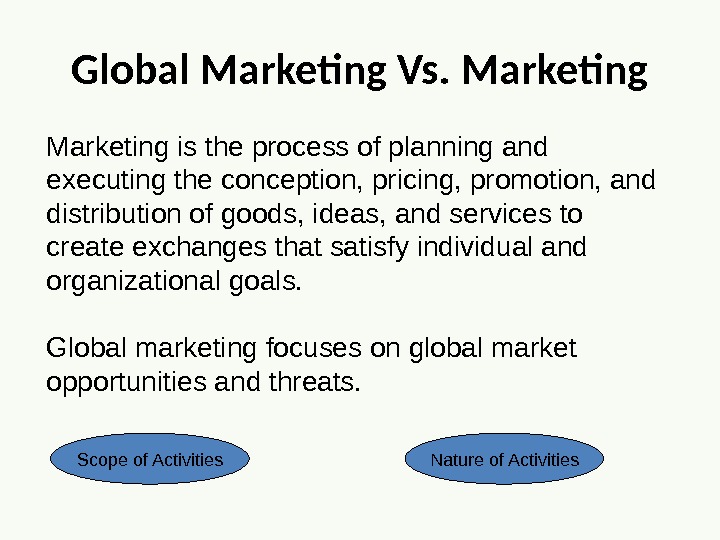



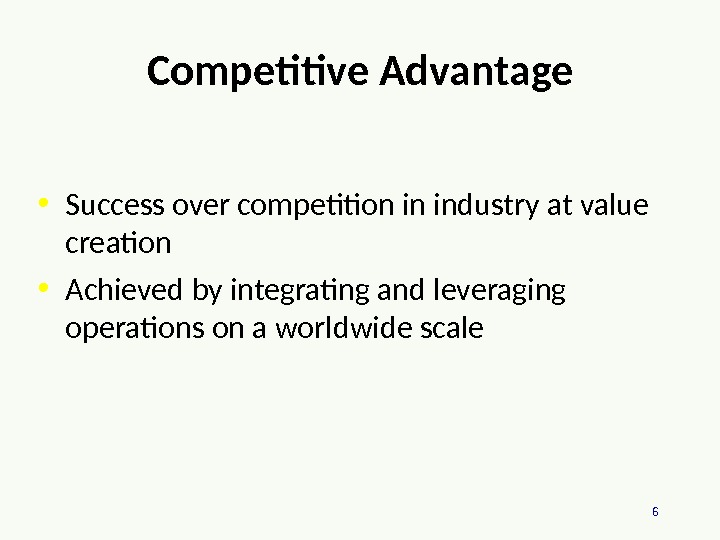
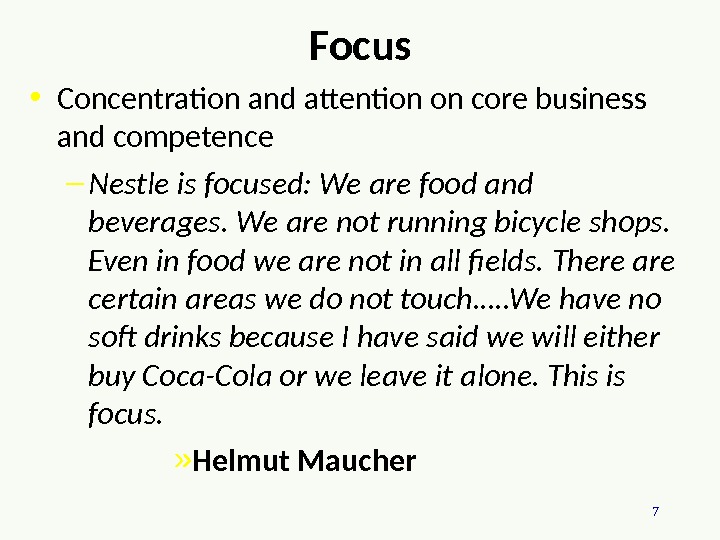

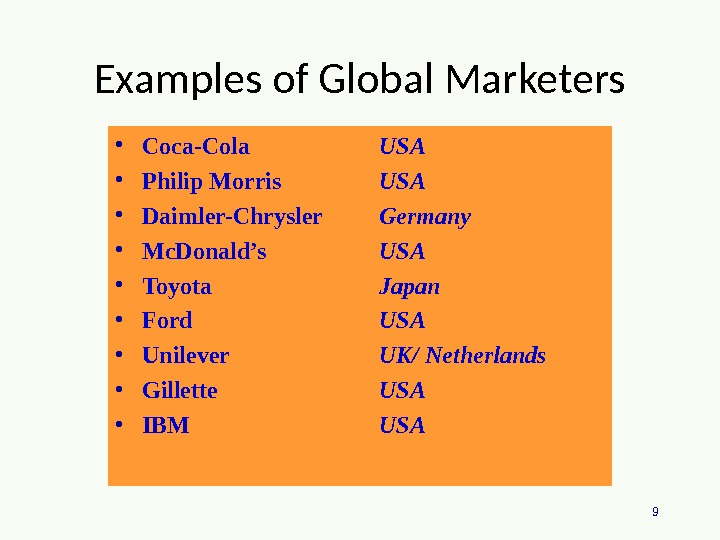
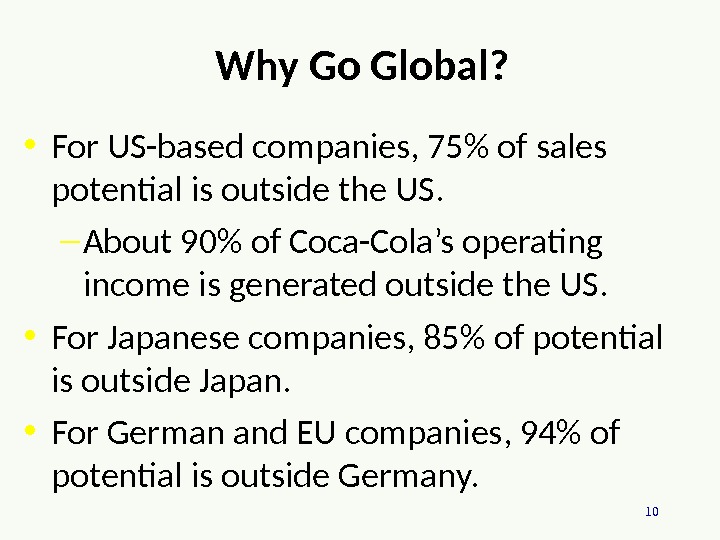


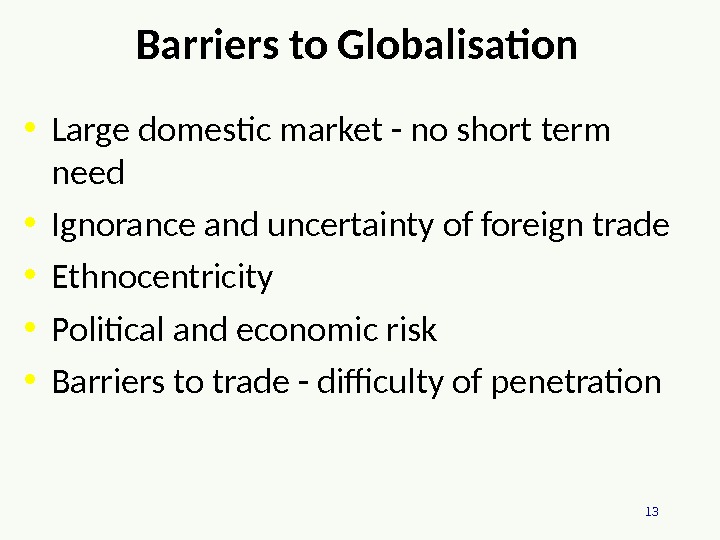
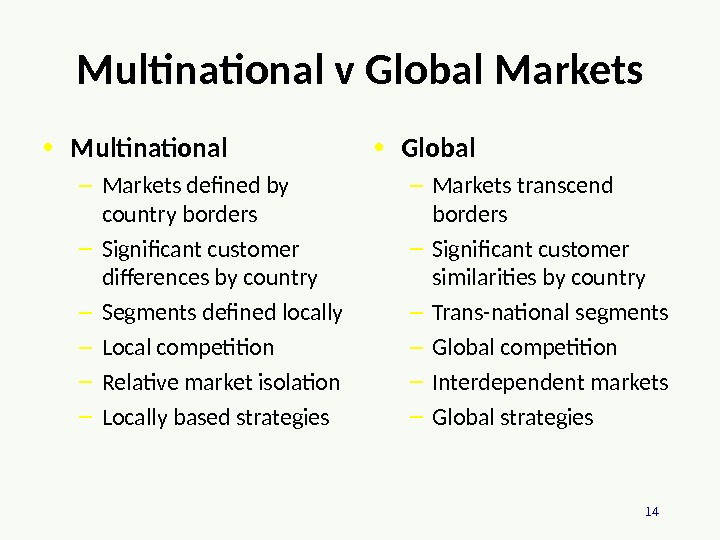


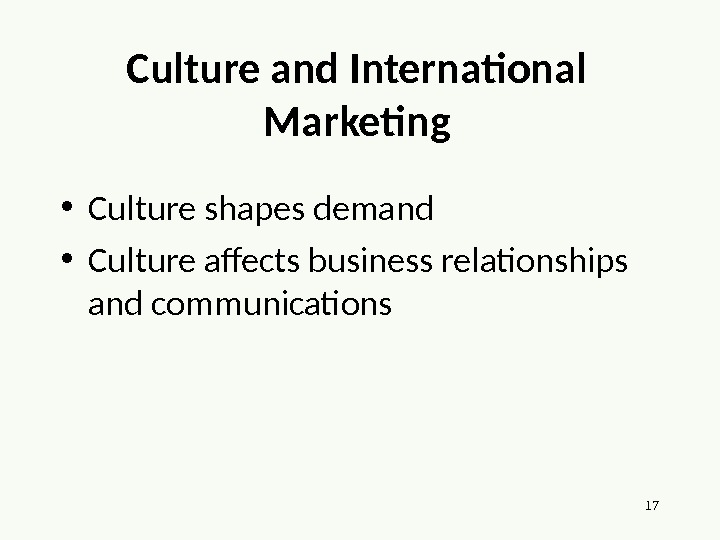












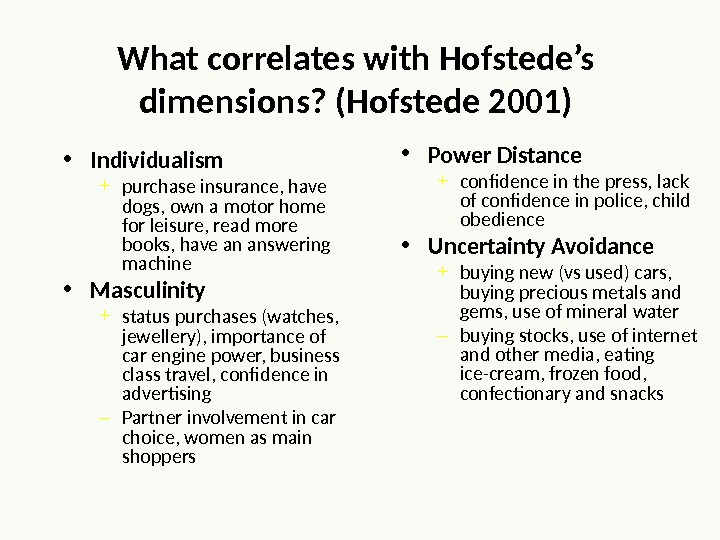
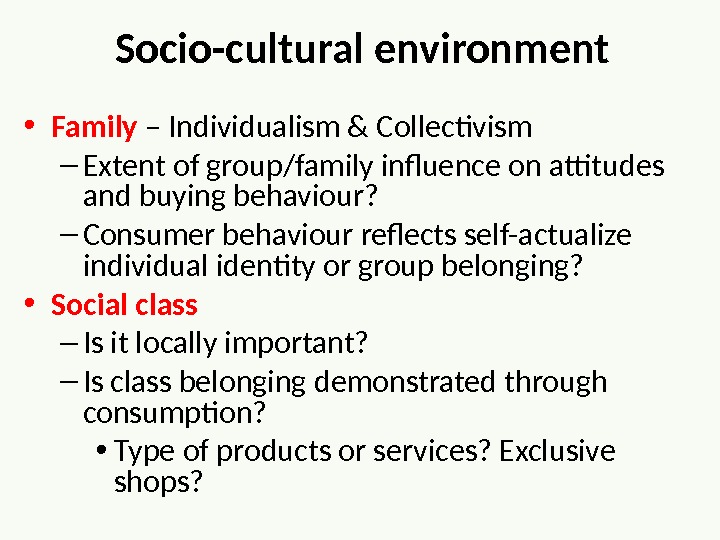























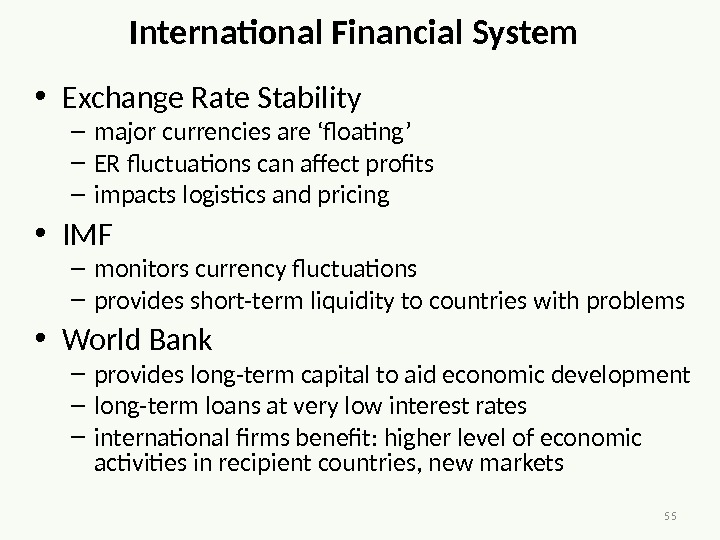




- Размер: 310.5 Кб
- Количество слайдов: 59
Описание презентации Презентация mitali slides 1 по слайдам
 INTERNATIONAL MARKETING Prepared by Dr. M Mittra
INTERNATIONAL MARKETING Prepared by Dr. M Mittra
 Global Marketing Vs. Marketing is the process of planning and executing the conception, pricing, promotion, and distribution of goods, ideas, and services to create exchanges that satisfy individual and organizational goals. Global marketing focuses on global market opportunities and threats. Nature of Activities. Scope of Activities
Global Marketing Vs. Marketing is the process of planning and executing the conception, pricing, promotion, and distribution of goods, ideas, and services to create exchanges that satisfy individual and organizational goals. Global marketing focuses on global market opportunities and threats. Nature of Activities. Scope of Activities
 Reasons for Global Marketing Growth Access to new markets Access to resources Survival Against competitors with lower costs (due to increased access to resources
Reasons for Global Marketing Growth Access to new markets Access to resources Survival Against competitors with lower costs (due to increased access to resources
 Keys to Global Success Value creation Competitive Advantage Focus
Keys to Global Success Value creation Competitive Advantage Focus
 5 Value Creation • Value = Benefits/Price – Price is a function of money, time, and effort – Benefits result from the product, promotion, and distribution • 2 methods of value creation • Improved benefits • Lower prices
5 Value Creation • Value = Benefits/Price – Price is a function of money, time, and effort – Benefits result from the product, promotion, and distribution • 2 methods of value creation • Improved benefits • Lower prices
 6 Competitive Advantage • Success over competition in industry at value creation • Achieved by integrating and leveraging operations on a worldwide scale
6 Competitive Advantage • Success over competition in industry at value creation • Achieved by integrating and leveraging operations on a worldwide scale
 7 Focus • Concentration and attention on core business and competence – Nestle is focused: We are food and beverages. We are not running bicycle shops. Even in food we are not in all fields. There are certain areas we do not touch…. . We have no soft drinks because I have said we will either buy Coca-Cola or we leave it alone. This is focus. » Helmut Maucher
7 Focus • Concentration and attention on core business and competence – Nestle is focused: We are food and beverages. We are not running bicycle shops. Even in food we are not in all fields. There are certain areas we do not touch…. . We have no soft drinks because I have said we will either buy Coca-Cola or we leave it alone. This is focus. » Helmut Maucher
 8 Globalization or Global Localization? • Globalization – Developing standardized products marketed worldwide with a standardized marketing mix – Essence of mass marketing • Global localization – Mixing standardization and customization in a way that minimizes costs while maximizing satisfaction – Essence of segmentation – Think globally, act locally
8 Globalization or Global Localization? • Globalization – Developing standardized products marketed worldwide with a standardized marketing mix – Essence of mass marketing • Global localization – Mixing standardization and customization in a way that minimizes costs while maximizing satisfaction – Essence of segmentation – Think globally, act locally
 9 Examples of Global Marketers • Coca-Cola • Philip Morris • Daimler-Chrysler • Mc. Donald’s • Toyota • Ford • Unilever • Gillette • IBM USA Germany USA Japan USA UK/ Netherlands US
9 Examples of Global Marketers • Coca-Cola • Philip Morris • Daimler-Chrysler • Mc. Donald’s • Toyota • Ford • Unilever • Gillette • IBM USA Germany USA Japan USA UK/ Netherlands US
 10 Why Go Global? • For US-based companies, 75% of sales potential is outside the US. – About 90% of Coca-Cola’s operating income is generated outside the US. • For Japanese companies, 85% of potential is outside Japan. • For German and EU companies, 94% of potential is outside Germany.
10 Why Go Global? • For US-based companies, 75% of sales potential is outside the US. – About 90% of Coca-Cola’s operating income is generated outside the US. • For Japanese companies, 85% of potential is outside Japan. • For German and EU companies, 94% of potential is outside Germany.
 11 Globalisation Drivers • Market — common customer needs, global customers, global channels, transferable marketing, leading markets • Competitive — common competitors using global strategies • Cost — scale economies, scope economies, sourcing advantages, avoidance of duplication • Government — favourable trade policies, compatible technical standards, common marketing regulations
11 Globalisation Drivers • Market — common customer needs, global customers, global channels, transferable marketing, leading markets • Competitive — common competitors using global strategies • Cost — scale economies, scope economies, sourcing advantages, avoidance of duplication • Government — favourable trade policies, compatible technical standards, common marketing regulations
 12 Competition in a Shrinking World • Five key factors – Communications and logistics – Financial and non-monetary settlement – World wide dedication to trade (eg. WTO, GATT) – Role of multinationals (large, dominant, subsidiaries in many countries) – Importance of peace
12 Competition in a Shrinking World • Five key factors – Communications and logistics – Financial and non-monetary settlement – World wide dedication to trade (eg. WTO, GATT) – Role of multinationals (large, dominant, subsidiaries in many countries) – Importance of peace
 13 Barriers to Globalisation • Large domestic market — no short term need • Ignorance and uncertainty of foreign trade • Ethnocentricity • Political and economic risk • Barriers to trade — difficulty of penetration
13 Barriers to Globalisation • Large domestic market — no short term need • Ignorance and uncertainty of foreign trade • Ethnocentricity • Political and economic risk • Barriers to trade — difficulty of penetration
 14 Multinational v Global Markets • Multinational – Markets defined by country borders – Significant customer differences by country – Segments defined locally – Local competition – Relative market isolation – Locally based strategies • Global – Markets transcend borders – Significant customer similarities by country – Trans-national segments – Global competition – Interdependent markets – Global strategies
14 Multinational v Global Markets • Multinational – Markets defined by country borders – Significant customer differences by country – Segments defined locally – Local competition – Relative market isolation – Locally based strategies • Global – Markets transcend borders – Significant customer similarities by country – Trans-national segments – Global competition – Interdependent markets – Global strategies
 15 Multinational versus Global Organisations • Multinational firms combine various market entry strategies, with modification of approach based on local needs • Global corporations treat the entire world as a single entity. Products and brands are standardised world-wide
15 Multinational versus Global Organisations • Multinational firms combine various market entry strategies, with modification of approach based on local needs • Global corporations treat the entire world as a single entity. Products and brands are standardised world-wide
 16 Risk Assessment • Category One — Inherent • Governmental and political environment • Stability of the host nation • Economic climate and prognosis • Possibility of nationalisation, expropriation, taxes, strikes, riots, revolutions • Category Two — Developing • Interaction between the host government and other nations, world organisations, NGOs/groups, movements • Possibility of retaliatory tariffs and quotas, boycotts, embargoes, deteriorating relationships, terrorism etc.
16 Risk Assessment • Category One — Inherent • Governmental and political environment • Stability of the host nation • Economic climate and prognosis • Possibility of nationalisation, expropriation, taxes, strikes, riots, revolutions • Category Two — Developing • Interaction between the host government and other nations, world organisations, NGOs/groups, movements • Possibility of retaliatory tariffs and quotas, boycotts, embargoes, deteriorating relationships, terrorism etc.
 17 Culture and International Marketing • Culture shapes demand • Culture affects business relationships and communications
17 Culture and International Marketing • Culture shapes demand • Culture affects business relationships and communications
 18 Understanding Culture • Culture: – The accumulation of shared meanings, rituals, norms, and traditions among the members of an organization or society. – A society’s personality • Consumption choices cannot be understood without cultural context. • A consumer’s culture determines the priorities the consumer attaches to activities and products.
18 Understanding Culture • Culture: – The accumulation of shared meanings, rituals, norms, and traditions among the members of an organization or society. – A society’s personality • Consumption choices cannot be understood without cultural context. • A consumer’s culture determines the priorities the consumer attaches to activities and products.
 19 What Is Culture? • Culture is “the collective programming of mind which distinguishes one category of people from another. ” Geert Hofstede • Culture is learned behaviour and value systems learned from • One’s environment • Family & friends • Society at large
19 What Is Culture? • Culture is “the collective programming of mind which distinguishes one category of people from another. ” Geert Hofstede • Culture is learned behaviour and value systems learned from • One’s environment • Family & friends • Society at large
 20 Culture’s Components Culture Language. Values Attitudes Religion Humour Gender roles. Non-verbal language
20 Culture’s Components Culture Language. Values Attitudes Religion Humour Gender roles. Non-verbal language
 21 Interpreting symbols • 7 bad luck in Kenya • 7 good luck in the Czech Republic • 7 magical in Benin, Africa • 10 is bad luck in Korea • 4 is related to death in Japan • Red represents witchcraft and death in many African countries, but is a positive in Denmark • Avoid triangular shapes in Hong Kong, Korea & Taiwan – It is a negative shape SOURCE: Business America, July 12,
21 Interpreting symbols • 7 bad luck in Kenya • 7 good luck in the Czech Republic • 7 magical in Benin, Africa • 10 is bad luck in Korea • 4 is related to death in Japan • Red represents witchcraft and death in many African countries, but is a positive in Denmark • Avoid triangular shapes in Hong Kong, Korea & Taiwan – It is a negative shape SOURCE: Business America, July 12,
 Four Dimensions of Cultural Variability (Hofstede 1980) • Power Distance • Uncertainty Avoidance • Masculinity/femininity • Individualism • Collectivist Cultures: People sub-ordinate their personal goals to those of a stable in-group • Individualist Cultures: Attach more importance to personal goals, and people are more likely to change memberships when the demands of the group become too costly.
Four Dimensions of Cultural Variability (Hofstede 1980) • Power Distance • Uncertainty Avoidance • Masculinity/femininity • Individualism • Collectivist Cultures: People sub-ordinate their personal goals to those of a stable in-group • Individualist Cultures: Attach more importance to personal goals, and people are more likely to change memberships when the demands of the group become too costly.
 Characterizing Dimensions • Relation to authority • hierarchical relations (power distance) • Relation to self • self-concept and personality (individualism) • Relation to risk • tolerance for unknown and deviations (uncertainty avoidance, tightness) • Propensity to change • receptivity of changes (Long term orientation) Source: Clark (1990)
Characterizing Dimensions • Relation to authority • hierarchical relations (power distance) • Relation to self • self-concept and personality (individualism) • Relation to risk • tolerance for unknown and deviations (uncertainty avoidance, tightness) • Propensity to change • receptivity of changes (Long term orientation) Source: Clark (1990)
 24 Individualism v Collectivism Individualism is the extent to which individuals are integrated into groups • Individualist societies – Others seen as resources – Task prevails over relationship – Calculative employer-employee relationship – e. g. USA (91) UK (89) Netherlands • Collectivist societies – Others seen as group members – Relationship prevails over task – Moral model of employer-employee – e. g. Pakistan (14) Hong Kong (25) Taiwan, (mid-range Japan India Spain)
24 Individualism v Collectivism Individualism is the extent to which individuals are integrated into groups • Individualist societies – Others seen as resources – Task prevails over relationship – Calculative employer-employee relationship – e. g. USA (91) UK (89) Netherlands • Collectivist societies – Others seen as group members – Relationship prevails over task – Moral model of employer-employee – e. g. Pakistan (14) Hong Kong (25) Taiwan, (mid-range Japan India Spain)
 Countries (1980) • Individualism – United States – Great Britain – Canada – Italy – Australia • Collectivism – Japan – Iran – Taiwan – Colombia
Countries (1980) • Individualism – United States – Great Britain – Canada – Italy – Australia • Collectivism – Japan – Iran – Taiwan – Colombia
 26 Power Distance Power distance is the extent to which the less powerful members of an organisation accept the inequality
26 Power Distance Power distance is the extent to which the less powerful members of an organisation accept the inequality
 27 Small Power Distance Societies • Small power distance society – Hierarchy means inequality of roles is established for convenience – Subordinates expect to be consulted – Ideal boss is a resourceful democrat • Examples – Austria PDI 11 – Israel PDI 13 – UK PDI
27 Small Power Distance Societies • Small power distance society – Hierarchy means inequality of roles is established for convenience – Subordinates expect to be consulted – Ideal boss is a resourceful democrat • Examples – Austria PDI 11 – Israel PDI 13 – UK PDI
 28 Masculinity v Femininity Hofstede (1998) Masculinity & Femininity • Masculine societies – Assertiveness is appreciated – Oversell yourself – Stress on careers – Decisiveness – Strong: Japan MAS 95, Italy MAS 70 – Moderate: UK MAS 66 • Feminine societies – Assertiveness ridiculed – Undersell yourself, be modest – Emphasis on quality of life – Intuition – Strong: Sweden MAS 5 – Moderate: France MAS
28 Masculinity v Femininity Hofstede (1998) Masculinity & Femininity • Masculine societies – Assertiveness is appreciated – Oversell yourself – Stress on careers – Decisiveness – Strong: Japan MAS 95, Italy MAS 70 – Moderate: UK MAS 66 • Feminine societies – Assertiveness ridiculed – Undersell yourself, be modest – Emphasis on quality of life – Intuition – Strong: Sweden MAS 5 – Moderate: France MAS
 Long/short term orientation or Confucian Dynamic High • Many truths – (time, context) • Pragmatic • Long-term orientation • Acceptance of change • Perseverance • Thrift for investment Low • Absolute truth • Conventional/traditional • Short term orientation • Concern for stability • Quick results expected • Spending for today
Long/short term orientation or Confucian Dynamic High • Many truths – (time, context) • Pragmatic • Long-term orientation • Acceptance of change • Perseverance • Thrift for investment Low • Absolute truth • Conventional/traditional • Short term orientation • Concern for stability • Quick results expected • Spending for today
 What correlates with Hofstede’s dimensions? (Hofstede 2001) • Individualism + purchase insurance, have dogs, own a motor home for leisure, read more books, have an answering machine • Masculinity + status purchases (watches, jewellery), importance of car engine power, business class travel, confidence in advertising – Partner involvement in car choice, women as main shoppers • Power Distance + confidence in the press, lack of confidence in police, child obedience • Uncertainty Avoidance + buying new (vs used) cars, buying precious metals and gems, use of mineral water – buying stocks, use of internet and other media, eating ice-cream, frozen food, confectionary and snacks
What correlates with Hofstede’s dimensions? (Hofstede 2001) • Individualism + purchase insurance, have dogs, own a motor home for leisure, read more books, have an answering machine • Masculinity + status purchases (watches, jewellery), importance of car engine power, business class travel, confidence in advertising – Partner involvement in car choice, women as main shoppers • Power Distance + confidence in the press, lack of confidence in police, child obedience • Uncertainty Avoidance + buying new (vs used) cars, buying precious metals and gems, use of mineral water – buying stocks, use of internet and other media, eating ice-cream, frozen food, confectionary and snacks
 Socio-cultural environment • Family – Individualism & Collectivism – Extent of group/family influence on attitudes and buying behaviour? – Consumer behaviour reflects self-actualize individual identity or group belonging? • Social class – Is it locally important? – Is class belonging demonstrated through consumption? • Type of products or services? Exclusive shops?
Socio-cultural environment • Family – Individualism & Collectivism – Extent of group/family influence on attitudes and buying behaviour? – Consumer behaviour reflects self-actualize individual identity or group belonging? • Social class – Is it locally important? – Is class belonging demonstrated through consumption? • Type of products or services? Exclusive shops?
 Socio-cultural environment • Sex roles – Division of labour? – Who makes buying decisions? Who shops? • Age influences – Do people know their age? – Value of younger and older people in society? – Influence processes across age groups? – Purchasing power distribution across generations?
Socio-cultural environment • Sex roles – Division of labour? – Who makes buying decisions? Who shops? • Age influences – Do people know their age? – Value of younger and older people in society? – Influence processes across age groups? – Purchasing power distribution across generations?
 Loyalty – brand, product, store … USA – value opportunity • Assumed disloyal • Enjoy change more than stability • Price competition Asian – value certainty • High level of since brand dominance • Rely on information from reference group, word of mouth is important • Follow group consensus until proved wrong
Loyalty – brand, product, store … USA – value opportunity • Assumed disloyal • Enjoy change more than stability • Price competition Asian – value certainty • High level of since brand dominance • Rely on information from reference group, word of mouth is important • Follow group consensus until proved wrong
 34 Key Issues • Time • Language, forms of address • Non-verbal communication, dress code • Responsibility • Introductions • Negotiations
34 Key Issues • Time • Language, forms of address • Non-verbal communication, dress code • Responsibility • Introductions • Negotiations
 35 The Great Divide — Deal v Relationship Deal Moderately Relationship Focused Deal-Focused Focused Northern Europe Britain Arab World Germany South Africa North America S Europe Latin America Australia & NZ Hong Kong Asia Singapore Source: Gesteland, RR 1999 Cross-cultural Business Behaviour Copenhagen Business School Press
35 The Great Divide — Deal v Relationship Deal Moderately Relationship Focused Deal-Focused Focused Northern Europe Britain Arab World Germany South Africa North America S Europe Latin America Australia & NZ Hong Kong Asia Singapore Source: Gesteland, RR 1999 Cross-cultural Business Behaviour Copenhagen Business School Press
 36 Euroconsumer: Fact or Fiction? Levitt (1983) “The world’s needs and desires have become irrevocably homogenised. ” • Technology • Communications – Media & travel • Country of origin effects — do they persist?
36 Euroconsumer: Fact or Fiction? Levitt (1983) “The world’s needs and desires have become irrevocably homogenised. ” • Technology • Communications – Media & travel • Country of origin effects — do they persist?
 International Marketing Environment
International Marketing Environment
 38 • IT Environment – New Challenges in Marketing – The Age of Technological Discontinuities • The Economic Environment – Stages of Market Developmet – Marketing and Economic Development • The Political Environment – Issues – Current Trends – Ways to avoid legal problems Overview
38 • IT Environment – New Challenges in Marketing – The Age of Technological Discontinuities • The Economic Environment – Stages of Market Developmet – Marketing and Economic Development • The Political Environment – Issues – Current Trends – Ways to avoid legal problems Overview
 39 • E-Commerce • Intranet • Internet • Portals • Web Browser • World Wide Web • Virtual Reality • EDI (electronic data exchange) IT Environment
39 • E-Commerce • Intranet • Internet • Portals • Web Browser • World Wide Web • Virtual Reality • EDI (electronic data exchange) IT Environment
 40 The Age of Technological Discontinuities The rapid advances in ICT are profoundly affecting the way global marketing is conducted (New Economy) – additional distribution and communication channels (e-commerce) – precise targeting (segment of one), customisation and interaction – fundamentally new business models (network organisations) – empowered customers
40 The Age of Technological Discontinuities The rapid advances in ICT are profoundly affecting the way global marketing is conducted (New Economy) – additional distribution and communication channels (e-commerce) – precise targeting (segment of one), customisation and interaction – fundamentally new business models (network organisations) – empowered customers
 41 The Economic Environment • World Economy has changed profoundly during the last 50 years – Emergence of global markets – Integration of world economy • Capital movements are driving force of world economy • Production is “uncoupled” from employment • Macroeconomics of individual countries no longer control economic outcomes
41 The Economic Environment • World Economy has changed profoundly during the last 50 years – Emergence of global markets – Integration of world economy • Capital movements are driving force of world economy • Production is “uncoupled” from employment • Macroeconomics of individual countries no longer control economic outcomes
 42 Economic Systems: Rankings of economic freedom among countries • Free: – E. g. , Hong Kong, Singapore, US, Japan, UK, Taiwan, Bahrain • Mostly Free – E. g. , Canada, Germany, Austria, Estonia, France, Sweden, Hungary • Mostly Unfree – E. g. , Turkey, Mexico, Israel, Malta, Russia, Bulgaria, Philippines • Repressed – E. g. , North Korea, Haiti, Moldova, Angola, Cuba Index of Economic Freedom (Source: Heritage Foundation) Variables considered include such things as: Trade policy Banking policy Wage and price controls Taxation policy Property rights
42 Economic Systems: Rankings of economic freedom among countries • Free: – E. g. , Hong Kong, Singapore, US, Japan, UK, Taiwan, Bahrain • Mostly Free – E. g. , Canada, Germany, Austria, Estonia, France, Sweden, Hungary • Mostly Unfree – E. g. , Turkey, Mexico, Israel, Malta, Russia, Bulgaria, Philippines • Repressed – E. g. , North Korea, Haiti, Moldova, Angola, Cuba Index of Economic Freedom (Source: Heritage Foundation) Variables considered include such things as: Trade policy Banking policy Wage and price controls Taxation policy Property rights
 43 Stages of Market Development • High income countries • Upper-middle income countries • Low income countries » Categories developed by The World Bank » Stages based on GNP
43 Stages of Market Development • High income countries • Upper-middle income countries • Low income countries » Categories developed by The World Bank » Stages based on GNP
 44 • China • India • Indonesia • South Korea • Brazil BEMs: Big Emerging Markets • Mexico • Argentina • South Africa • Poland • Turkey
44 • China • India • Indonesia • South Korea • Brazil BEMs: Big Emerging Markets • Mexico • Argentina • South Africa • Poland • Turkey
 45 The Political Environment • Global marketing activities influenced by governmental institutions, political parties, and organisations • Environment determines attitude towards – Sovereignty • Global market integration erodes economic sovereignty – Political risk • A lower level of political risk tends to attract higher investments – Taxes • Many companies make efforts to minimise tax liability by shifting locations of income – Dilution of equity control • Political pressure often causes companies to take local partners (strategic alliances, joint-ventures) – Creeping Expropriation • severe limitations on economic activities. E. g. , limitations on repatriation of profits, content requirements, quotas for hiring locals, price controls
45 The Political Environment • Global marketing activities influenced by governmental institutions, political parties, and organisations • Environment determines attitude towards – Sovereignty • Global market integration erodes economic sovereignty – Political risk • A lower level of political risk tends to attract higher investments – Taxes • Many companies make efforts to minimise tax liability by shifting locations of income – Dilution of equity control • Political pressure often causes companies to take local partners (strategic alliances, joint-ventures) – Creeping Expropriation • severe limitations on economic activities. E. g. , limitations on repatriation of profits, content requirements, quotas for hiring locals, price controls
 46 • Privatization – Moves an economy toward free-market direction – Evidence that governments are changing how they exercise sovereign power Current Trends • Global Integration — Countries in advanced preferential trade agreements sacrifice many sovereign rights to improve economy
46 • Privatization – Moves an economy toward free-market direction – Evidence that governments are changing how they exercise sovereign power Current Trends • Global Integration — Countries in advanced preferential trade agreements sacrifice many sovereign rights to improve economy
 47 Ways to Avoid Legal Problems (1) Scope of legal regulations Know about treaties of friendship, commerce, and navigation Jurisdiction Specify which nation’s laws apply, when a transaction crosses boundaries Intellectual Property Ensure that patents and trademarks are registered in each country business is conducted
47 Ways to Avoid Legal Problems (1) Scope of legal regulations Know about treaties of friendship, commerce, and navigation Jurisdiction Specify which nation’s laws apply, when a transaction crosses boundaries Intellectual Property Ensure that patents and trademarks are registered in each country business is conducted
 48 Ways to Avoid Legal Problems (2) Intellectual Property (cont. ) Beware of counterfeiting: the unauthorized copying and production of a product Beware of piracy: the unauthorized publication or reproduction of copyrighted work Know about international treaties, e. g. World Intellectual Property Organization The Patent Cooperation Treaty European Patent Convention
48 Ways to Avoid Legal Problems (2) Intellectual Property (cont. ) Beware of counterfeiting: the unauthorized copying and production of a product Beware of piracy: the unauthorized publication or reproduction of copyrighted work Know about international treaties, e. g. World Intellectual Property Organization The Patent Cooperation Treaty European Patent Convention
 49 Ways to Avoid Legal Problems (3) Licensing Contractual agreement in which a licensor allows a licensee to use patents, trademarks, technology or other intangible assets in return for royalty payments In many countries, elements of licensing are regulated by governmental agencies, e. g. — Duration of agreement — Amount of royalties a company can receive
49 Ways to Avoid Legal Problems (3) Licensing Contractual agreement in which a licensor allows a licensee to use patents, trademarks, technology or other intangible assets in return for royalty payments In many countries, elements of licensing are regulated by governmental agencies, e. g. — Duration of agreement — Amount of royalties a company can receive
 50 Institutions in the World Economy • World Trade Organisation (WTO) – Since 1947 it sponsored 8 major multilateral trade negotiations (GATT) • Uruguay round being the latest (1986 -93) • resulted in reduction of tariff rates of ten of thousands of items • Establishment in 1995 as a permanent institution with more decision making power • HQ: Geneva 145 members
50 Institutions in the World Economy • World Trade Organisation (WTO) – Since 1947 it sponsored 8 major multilateral trade negotiations (GATT) • Uruguay round being the latest (1986 -93) • resulted in reduction of tariff rates of ten of thousands of items • Establishment in 1995 as a permanent institution with more decision making power • HQ: Geneva 145 members
 51 Institutions in the World Economy • World Trade Organisation (WTO) cont. . – Main Roles • Provide a framework for multilateral trade negotiations • Ensure that trade flows are as smooth, predictable and as free as possible • Further the Principle of Non-discrimination – a tariff concession to one trading partner must be extended to all WTO members under the MFN clause • Consultation – Acts as mediator in global trade disputes
51 Institutions in the World Economy • World Trade Organisation (WTO) cont. . – Main Roles • Provide a framework for multilateral trade negotiations • Ensure that trade flows are as smooth, predictable and as free as possible • Further the Principle of Non-discrimination – a tariff concession to one trading partner must be extended to all WTO members under the MFN clause • Consultation – Acts as mediator in global trade disputes
 52 Regionalisation of Markets (1) • Many different forms of economic co-operation between countries – Free trade areas • free movement of goods • no tariffs or quotas imposed against goods coming from other members – Customs unions • more ambitious requirements • common external tariff
52 Regionalisation of Markets (1) • Many different forms of economic co-operation between countries – Free trade areas • free movement of goods • no tariffs or quotas imposed against goods coming from other members – Customs unions • more ambitious requirements • common external tariff
 53 Regionalisation of Markets (2) • European Union (EU) – 15 European member countries – Market of 379 million people • North American Free Trade Agreement (NAFTA) – United States, Canada, Mexico – Market of 381 million people • Association of Southeast Asian Countries (ASEAN) – 10 member countries (Brunei, Cambodia, Indonesia, Laos, Malaysia, Myanmar, Philippines, Singapore, Thailand, Vietnam) • LAFTA, MERCOSUR, SAAR
53 Regionalisation of Markets (2) • European Union (EU) – 15 European member countries – Market of 379 million people • North American Free Trade Agreement (NAFTA) – United States, Canada, Mexico – Market of 381 million people • Association of Southeast Asian Countries (ASEAN) – 10 member countries (Brunei, Cambodia, Indonesia, Laos, Malaysia, Myanmar, Philippines, Singapore, Thailand, Vietnam) • LAFTA, MERCOSUR, SAAR
 54 Regionalism and the MNC • Relevant market area will shape the firm’s decisions – logistics: supply from within a region rather than to export it – face local competition – greater uniformity will occur in marketing to the member countries; economies of scale in NPD, pricing, distribution, promotion
54 Regionalism and the MNC • Relevant market area will shape the firm’s decisions – logistics: supply from within a region rather than to export it – face local competition – greater uniformity will occur in marketing to the member countries; economies of scale in NPD, pricing, distribution, promotion
 55 International Financial System • Exchange Rate Stability – major currencies are ‘floating’ – ER fluctuations can affect profits – impacts logistics and pricing • IMF – monitors currency fluctuations – provides short-term liquidity to countries with problems • World Bank – provides long-term capital to aid economic development – long-term loans at very low interest rates – international firms benefit: higher level of economic activities in recipient countries, new markets
55 International Financial System • Exchange Rate Stability – major currencies are ‘floating’ – ER fluctuations can affect profits – impacts logistics and pricing • IMF – monitors currency fluctuations – provides short-term liquidity to countries with problems • World Bank – provides long-term capital to aid economic development – long-term loans at very low interest rates – international firms benefit: higher level of economic activities in recipient countries, new markets
 56 International Financial System • Exchange Rate Stability – major currencies are ‘floating’ – fluctuations can affect profits – impacts logistics and pricing • IMF – monitors ER fluctuations – provides short-term liquidity to countries with problems • World Bank – provides long-term capital to aid economic development – long-term loans at very low interest rates – international firms benefit: higher level of economic activities in recipient countries, new markets
56 International Financial System • Exchange Rate Stability – major currencies are ‘floating’ – fluctuations can affect profits – impacts logistics and pricing • IMF – monitors ER fluctuations – provides short-term liquidity to countries with problems • World Bank – provides long-term capital to aid economic development – long-term loans at very low interest rates – international firms benefit: higher level of economic activities in recipient countries, new markets
 57 Jurisdiction • Employees of foreign companies should understand the extent to which they are subject to jurisdiction of host-country courts • Courts have jurisdiction if it can be demonstrated that the company is doing business in the state the court sits
57 Jurisdiction • Employees of foreign companies should understand the extent to which they are subject to jurisdiction of host-country courts • Courts have jurisdiction if it can be demonstrated that the company is doing business in the state the court sits
 58 Today… • Product Concepts • Global Product Planning: Strategic Alternatives — Adaptation Vs Standardisation • Global Brand Leadership • Country of Origin effect • New Products
58 Today… • Product Concepts • Global Product Planning: Strategic Alternatives — Adaptation Vs Standardisation • Global Brand Leadership • Country of Origin effect • New Products
 Case study
Case study

